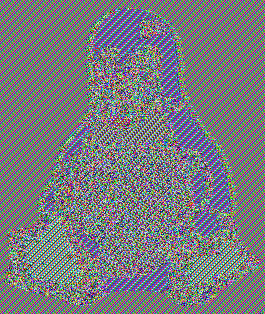Introduction
The most naive mode of operation is called Electronic Cookboook (ECB) mode. It divides the message into blocks
Decryption is just the opposite - it divides the ciphertext into blocks
Security of ECB Mode
The ECB Mode is very simple so it comes as no surprise that it is not very secure.
The ECB mode should *never* be used.
In particular, it is not CPA-secure, since it is entirely deterministic. Moreover, it is not even semantically secure because if a block is repeated in the plaintext, then the corresponding ciphertext block will also be repeated in the ciphertext which reveals a lot of information about the underlying message.
A famous example of ECB's egregious insecurity is called the ECB penguin. Here is the original image of Linux's mascot [Tux](https://en.wikipedia.org/wiki/Tux_(mascot)), created by Larry Ewing:

And here is the same image encrypted with AES-128 using ECB mode:

Not particularly secure, is it?